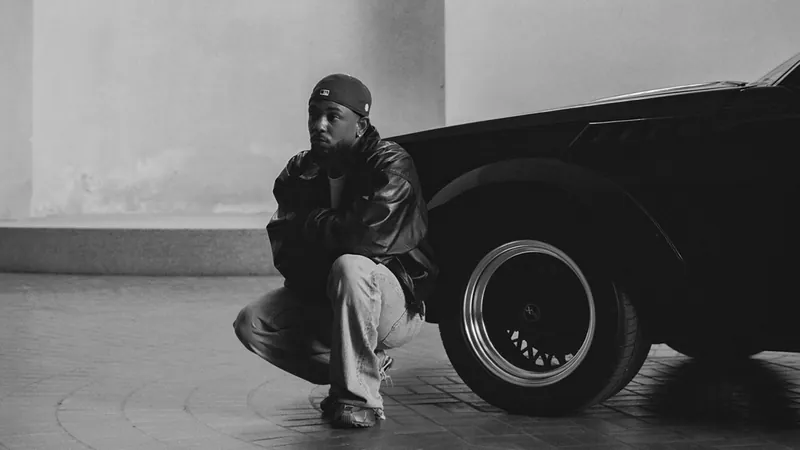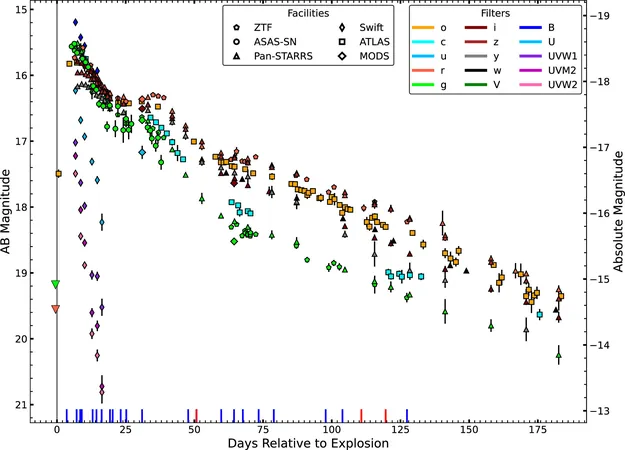
Kendrick Lamar Dominates 2024 with ‘GNX’ – A Deep Dive into His Rap Evolution and Rivalries
2024-11-25
Author: Emily
In 2024, Kendrick Lamar has unequivocally taken the rap industry by storm, cementing his status as one of the leading figures in the genre. With not just one but two Number One singles under his belt this year — “Like That,” featuring Future and Metro Boomin, and his standout solo track “Not Like Us” — Lamar is poised to potentially score a third hit before the year wraps up. Adding to the excitement, he has been chosen as the halftime performer for Super Bowl LIX in New Orleans, solidifying his relevance in mainstream culture.
However, it’s not merely his chart-topping singles or high-profile performances that have garnered attention; Lamar's rekindled rivalry with Drake has thrust him into the spotlight in an unexpected way. What began as a subtle tension has escalated into a fierce feud characterized by diss tracks and heated accusations, transforming Lamar’s persona from a revered lyrical genius to a fierce competitor unapologetically defending his reputation. The diss track “Not Like Us” even achieved the notable distinction of being the first rap song nominated for a Grammy for Song of the Year.
This rivalry has not only intensified Lamar's image but has also sparked discussions about the nature of rap as a combative sport. In the track “Dodger Blue” from his newly released album GNX, Lamar challenges his critics with lines that reflect his gritty determination to reclaim a place in rap’s competitive landscape. "Have you ever took a fade and ran three more back to back? Oh, you haven’t? Then shut the fuck up and keep it rap," he roars, relishing the gladiatorial aspect of the genre.
GNX serves as a culmination of Lamar's diverse identities: one track embodies the spiritual philosopher who channels divine inspiration on “Reincarnated,” while others, like “Wacced Out Murals,” showcase his relentless lyricism directed at both real and imagined adversaries. While this dramatic shift might bewilder some fans familiar with his earlier work, it illustrates Lamar's adaptability and hunger to remain relevant in a constantly changing rap landscape.
Moreover, the fallout from Lamar's battle with Drake appears to have reverberated through the industry. Lil Wayne voiced his displeasure on social media, sharing his feelings about being overlooked for the Super Bowl performance in favor of Lamar. Snoop Dogg, however, seemed to brush it off with humor, embracing the competitive nature of their exchanges. For those who remember Lamar’s homage to these legends in his earlier mixtapes, the current climate highlights a fascinating evolution in his career.
In September, Lamar teased new music with an untitled track on Instagram, taking aim at the negativity that often clouds hip-hop discussions. Although not included in GNX, it reflects his ongoing critique of the genre's challenges. He also revisits and expands upon the “Heart” series, which acknowledges his complex relationship with his former label, Top Dawg Entertainment, and his growth as an independent artist under pgLang.
As he transitions into this new phase, Lamar’s vision for his future becomes clear: he seeks to build an empire reminiscent of hip-hop titans like Ice Cube and Jay-Z, while also inviting fresh voices into his creative space. GNX resonates with the vibrant sounds of contemporary rap while nodding to historical influences, including samples from classic R&B artists like SWV, and embraces cultural nods that reflect his Los Angeles roots.
Despite the album's aggressive undertones, fans might feel a sense of longing for the introspective, self-reflective Lamar who once preached self-love and grapples with success. His ability to blend existential questions with the anonymity of mainstream rap’s demands echoes his earlier work, leaving listeners to ponder which version of himself he intends to inhabit moving forward.
Ultimately, Kendrick Lamar has not only proven himself the “GOAT” of 2024 — a title that seems undeniably justified through his artistic explorations in GNX — but he has also ignited broader discussions about the future of hip-hop and the accountability of its leading figures. The unanswered question remains: can hip-hop genuinely evolve while still embracing its roots in rivalry and competition? One can only hope that Lamar’s journey will inspire meaningful transformations for the genre as a whole.









 Brasil (PT)
Brasil (PT)
 Canada (EN)
Canada (EN)
 Chile (ES)
Chile (ES)
 España (ES)
España (ES)
 France (FR)
France (FR)
 Hong Kong (EN)
Hong Kong (EN)
 Italia (IT)
Italia (IT)
 日本 (JA)
日本 (JA)
 Magyarország (HU)
Magyarország (HU)
 Norge (NO)
Norge (NO)
 Polska (PL)
Polska (PL)
 Schweiz (DE)
Schweiz (DE)
 Singapore (EN)
Singapore (EN)
 Sverige (SV)
Sverige (SV)
 Suomi (FI)
Suomi (FI)
 Türkiye (TR)
Türkiye (TR)